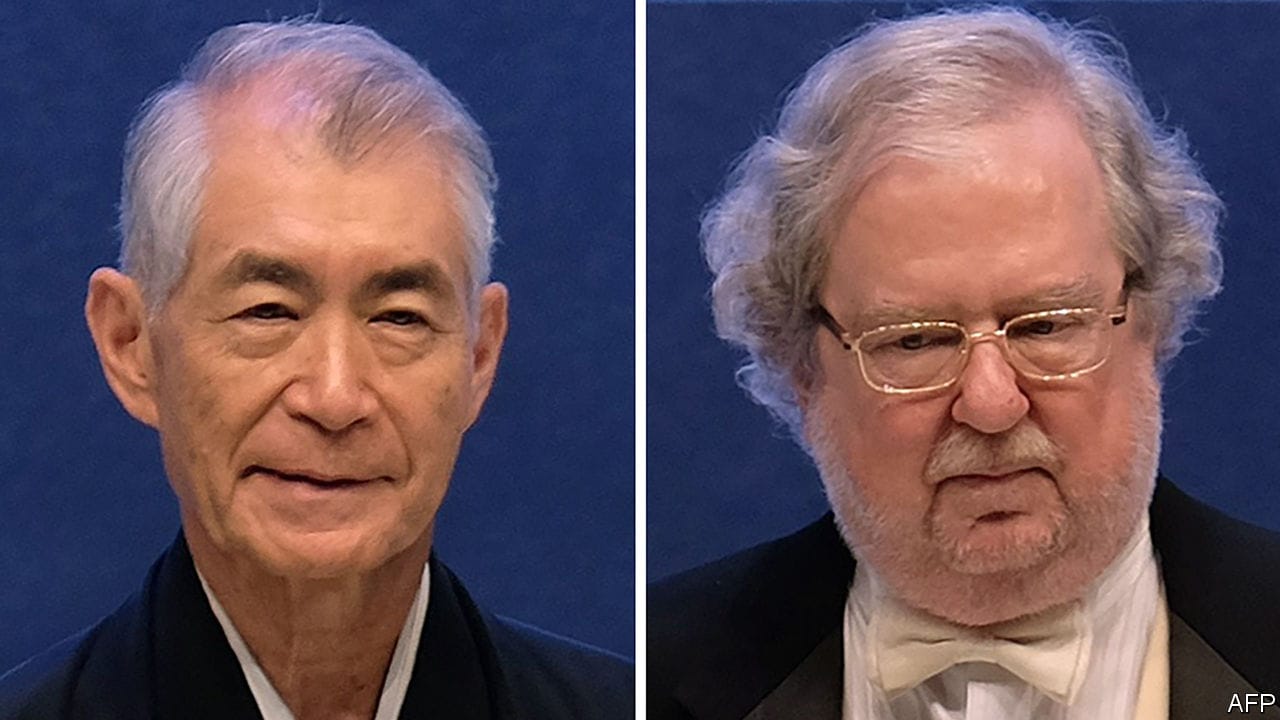- by
- 07 24, 2024
-

-
-
Loading

Loading

THIS year’s Nobel prize for physiology or medicine goes to James Allison of the University of Texas, and Tasuku Honjo of Kyoto University, in Japan (both pictured), “for their discovery of cancer therapy by inhibition of negative immune regulation”. The fact that remissions from apparently terminal cancer, though rare, do happen from time to time had long led some to dream that it might be possible to harness the body’s immune system to attack malignancies. The immune system is a network of cells which defends against parasites and pathogens. Yet decades of effort intended to make it assault cancer as well, an idea called immunotherapy, led to nothing. These many failures had, by the 1990s, caused most people and firms to abandon the field.Dr Allison was one of the few who never lost hope. He was particularly interested in a protein called CTLA-4. This is found on the surfaces of some T-cells, one of the main types of cell in the immune system. By 1994, when he was at the University of California, Berkeley, he and others had discovered that CTLA-4 puts a brake on T-cells’ ability to respond to cancer. In response he developed an antibody that blocks the protein, preventing its braking action on T-cells. Thus unchained, those cells can respond to tumours by attacking them. Tumours in mice vanished when they were given these CTLA-4 blocking antibodies.